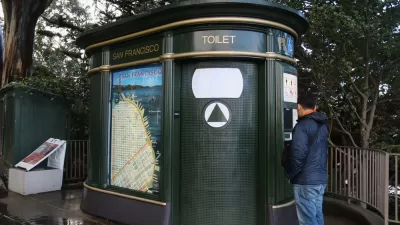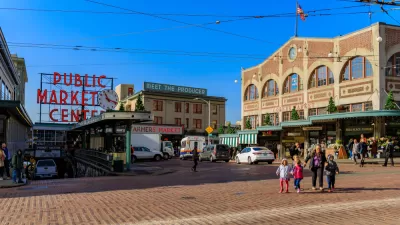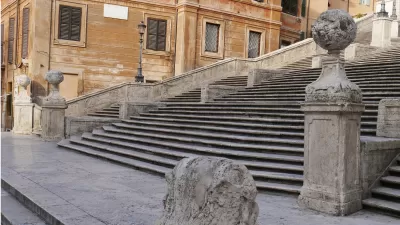A study conducted by the Project for Public Spaces finds that New York's new CitiBike stations are a locus for more than just cycling. They provide wayfinding and street seating, serve as gathering places, and encourage random social interactions.
"Are bikeshare stations adding to the sociability and amenability of the places they occupy?" ask PPS Transportation Associate David M. Nelson and Transportation Intern David Leyzerovsky. Using the observational methods of William Holly Whyte, they found: "the answer was a clear and resounding 'Yes!' People — not just bikeshare users, but everyone passing by station docks — are adopting the bikeshare system as part of the social infrastructure of the city."
At locations throughout Brooklyn and Manhattan, they observed that "[t[he bikeshare stations provided a place for people to eat, read, relax, socialize, skateboard, people watch, and play."
"Beyond their official purpose as merely a transportation program, bikeshare stations have proven to be dynamic tools for triangulation," they conclude.
FULL STORY: The Social Life of CitiBike Stations

Planetizen Federal Action Tracker
A weekly monitor of how Trump’s orders and actions are impacting planners and planning in America.

Map: Where Senate Republicans Want to Sell Your Public Lands
For public land advocates, the Senate Republicans’ proposal to sell millions of acres of public land in the West is “the biggest fight of their careers.”

Restaurant Patios Were a Pandemic Win — Why Were They so Hard to Keep?
Social distancing requirements and changes in travel patterns prompted cities to pilot new uses for street and sidewalk space. Then it got complicated.

Platform Pilsner: Vancouver Transit Agency Releases... a Beer?
TransLink will receive a portion of every sale of the four-pack.

Toronto Weighs Cheaper Transit, Parking Hikes for Major Events
Special event rates would take effect during large festivals, sports games and concerts to ‘discourage driving, manage congestion and free up space for transit.”

Berlin to Consider Car-Free Zone Larger Than Manhattan
The area bound by the 22-mile Ringbahn would still allow 12 uses of a private automobile per year per person, and several other exemptions.
Urban Design for Planners 1: Software Tools
This six-course series explores essential urban design concepts using open source software and equips planners with the tools they need to participate fully in the urban design process.
Planning for Universal Design
Learn the tools for implementing Universal Design in planning regulations.
Heyer Gruel & Associates PA
JM Goldson LLC
Custer County Colorado
City of Camden Redevelopment Agency
City of Astoria
Transportation Research & Education Center (TREC) at Portland State University
Camden Redevelopment Agency
City of Claremont
Municipality of Princeton (NJ)





























